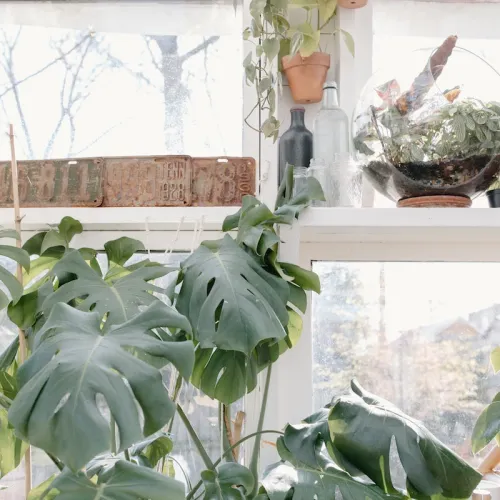Houseplants can go a long way to making your home feel fresher, cleaner, and full of life, but it’s not quite as easy as simply going to your local plant nursery and picking up the nicest plants you see. As anyone who has ever kept real plants will tell you, they can be as needy as pets. Without the right conditions and care, your luscious green plants might easily die, and when you consider how expensive some plants are, this can be more than disheartening, to say the least.
So, you want plants but don’t want to buy anything that requires more effort than you can dedicate. How do you know what to buy? We’ve put together some top tips and considerations that will help you to choose the best houseplants for your lifestyle, so keep reading to find out more.
Environment
The first step – regardless of how much energy you can provide – is to assess your environment. If you live in a basement apartment in Alaska with very little sunlight or heat, you will struggle to keep Aloe vera, String of Pearls or Jade plants since these hardy greens are adapted to bright and warm environments. On the other hand, too much sunlight and heat can be damaging and isn’t for every plant. Here are some top plant suggestions for different types of environments.
- Warm climates – succulents, cacti, devil’s ivy, and ponytail palm plants.
- Cool climates – cast iron, sago palm, dracaena, and geranium plants.
- High light climates – jade, hibiscus, papyrus, and croton plants.
- Low light climates – snake, spider, pothos, and birds nest fern plants.
If you take a warm climate plant and put it in a cool climate, it could die, and vice versa. The same applies to taking a low-light plant and putting it in a high-light climate. Keep an eye on the leaves and take note of any discoloration or changes to the texture of the leaves as they are usually good indicators that your plant is barely surviving, let alone thriving in its current conditions.
Effort
The next thing you need to consider is the amount of effort, love and care you’re able to dedicate to your house plants. If you work from home, have bucket loads of patience and are happy to spend money on only the best nutrients for plant growth and the finest pots every year for re-potting season, you are well placed to welcome a needy plant like a bonsai tree into your family. For those who barely have a minute to themselves and are constantly out and about, an independent plant like the ZZ is the best option.
To give you a better idea of what kind of houseplant is best for you, see our top suggestions below.
- High maintenance (lots of water, light, nutrients, pruning, and temperature control) – orchid, maidenhair fern, fiddle leaf fig tree, and elephant’s ear plants.
- Low maintenance (infrequent watering, hardy plants) – yucca, air, rubber, and philodendron plants.
Air plants are especially great for those who don’t have a lot of time to dedicate to growing plants because they don’t even require soil! In contrast, orchids are well known for being extremely temperamental and fiddly plants, with the slightest change in temperature or light resulting in dramatic consequences.
When choosing the best houseplant, you need to combine your effort with your environment in order to find the most viable and suitable plant for your lifestyle. Doing so will spare you of the frustration of sweeping away fallen leaves and rotted roots, and instead, you’ll be able to bask in the green glory of your successful plant growing skills.

